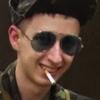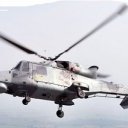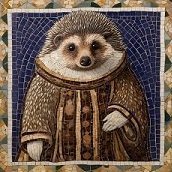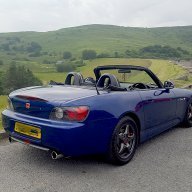Search the Community
Showing results for tags 'CMR'.
-

Blackburn Firebrand TF5, 1/72nd CMR resin kit
Mr T posted a topic in Here comes the Fleet Air Arm GB
This is my second build for this GB. It is the CMR kit of the Blackburn Firebrand TF5. The Firebrand was originally designed to meet a 1940 Specification for a carrier based fighter powered by the Napier Sabre engine. The first prototype flew in 1942, and displayed some handling issues, and quite clearly was not going to be suitable for its intended role. The aircraft was adapted for the role of what would be later called a strike aircraft, but the continuing problems with the Sabre engine saw the aircraft re-engined with the Bristol Centaurus, itself a power plant with development problems. The Firebrand completely missed the war as an operational aircraft, only a trials squadron forming before the war's end. The Firebrand eventually entered frontline service in September 1945 with the Mk5/5a, following on in 1947 and remaining until replaced by the Wyvern in 1953. The CMR kit comes in a top opening stout cupboard box with the resin parts in sealed polythene pockets. The resin is mainly grey, with excellent detail and breakdown is like an injection moulded kit. The wing is a one piece moulding with undercut undercarriage bays, and the undercarriage itself cast in a hard black resin, together with clear resin wing tip lights. Two vacformed canopies are provided with two Photo Etched sheets, one pre-coloured, with some insanely small details. Some of these are unlikely to find their way on to the model. A well printed decal sheet and very full instructions complete the package. Options are provided for torpedo, bomb or rocket armament, but the thought of 32 individual PE fins plus mounts means it will definitely be a torpedo. -
Something a little different for me, i.e. Resin, Richy's favourite legal substance but something I'm still learning about. The aircraft is part of my ongoing Finnish history lesson from my mate @vppelt68, here's the kit below: Managed to get some Special Hobby decals off evilbay so just need a painting guide for the inside and out. Cheers Pat
-
My second build for this GB is another failed record breaker in the shape of "Speed Spitfire" N.17 After Herrman Wurster captured the world landplane record for Germany flying a modified Messerschmitt Bf 109 on 11 November 1937 with a speed of 379mph (610 kmh), the British plans for a record attempt using a modified Spitfire received some new interest. The 48th production Spitfire Mk.I K9834, then in a very early stage of construction at Woolston, was selected for modification to the "Speed Spitfire" for an attempt on the world landplane record in 1938. The aircraft was finished under contract 817241/38, it had a reduced wing span of 33 ft 8 in (10.26 m), a streamlined cockpit, flush riveting, and a high-gloss finish to improve performance. Further modifications were a larger radiator and oil cooler and the standard tail wheel was replaced by a skid. The powerplant was a 2160 hp Rolls-Royce Merlin 3M driving a four-blade fixed-pitch propeller. Registered in the Class B as N-17, it was first flown by J. 'Mutt' Summers on 11 November 1938. It was hoped that N-17 would achieve 420 mph (676 kmh), but before an attempt could be made the world lanplane record was broken on 30 March 1939, by a Messerschmitt Bf 109 R flown by Hans Dieterle at a speed of 469.22 mph (755.12 kmh). Further work on N-17 as a potential record-breaker was abandoned. However much was learnt about high speed flight from these efforts with regard to the problems of engine-cooling at high speeds, and N-17 also tested various propellers. N-17 was returned to its original identity of K9834 and standard construction and for a time was used for communications duties. Later the aircraft went to Benson where it became one of the first Photo Reconnaissance aircraft being fitted with a F.24 camera and a Merlin XI engine. Performance was not satisfactory and K9834 was completely rebuilt by Heston Aircraft Ltd. who brought it up to Mk.II standard with a new cockpit, engine-driven hydraulics and fire-proof bulkhead. However, the limited fuel short wings and no guns made it unsuitable for operational service and it was used throughout the war as a high speed hack. It was eventually scrapped in June 1946. Above information is from Alfred Price's "The Spitfire Story" and from the Sam Weller collection website. I am not 100% sure how I go about making the model of N.17 - either with the CMR kit. or the RS models resin kit Both kits are a bit long in the tooth. The RS kit has no gull wing representation and the CMR kit - even though it has some nice PE parts - shows its age as well. I may end up utilizing some Airfix Mk.I parts I have left after experimenting with removing the trenches (panel lines) on this kit. Cheers, Peter
-
I picked up this CMR Seafire a while ago when the only way to make a Seafire in 1:72 was to convert a Spitfire kit or one of CMR's resin kits. I've a few in the stash and some have been built but then Admiral, Sword and AZ Models all introduced injection moulded Seafires, and almost every Seafire Mark is available IM. So the resin kits have been left sitting in their bags. Which is a shame as they're accurate, nicely moulded and well engineered. And unlike some resin ranges they're not all that challenging to build. This build is therefore not something a bit esoteric like my Parnall Plover but more mainstream but one can never have too many Seafires. At some point I started the kit by putting some paint on the interior bits, and presumably giving it a thorough wash in my ultrasonic cleaner. Nothing's off the moulding blocks and cyano hasn't come near so it's well below the 25% already built. Here are the parts, all nice and fine and with a one piece wing, optional filters and an external tank. CMR's instructions are good and there's livery options for three aircraft. Although the colour call out for the 885 NAS aircraft is a bit strange. I'll probably go for the 880 NAS option as I've actually got a couple of Seafires finished in the other options that I built in the Spitfire/Seafire GB. Fairly straightforward transfer sheet and probably he most challenging part for me but thankfully there's two, a vac form canopy. The build will be out of the box (bag?) with the addition of seat belts. If I have a spare IM canopy that fits in the stash I might use that instead of spending hours swearing at a tiny piece of vac form.
-
Before anybody says, 'There's no way the Nimrod was an interceptor ' this is a much earlier airframe. The Nimrod was the FAA's last biplane fighter, being replaced just before WW2 by the Skua. The Nimrod was effectively a navalised Hawker Fury with catapult capability and an arrestor hook. It was the Fleet fighter throughout the 1930s serving in all FAA carriers. A number were also sold to Denmark without naval equipment and they were still in service when Denmark was invaded, but none of them saw combat. A valuable and effective fighter that took over Fleet defence from the Flycatcher. Ive had the CMR resin kit in my stash for a while and as far as I know it is the most mainstream as any others are vac forms. I do recall seeing a conversion from an Airfix Fury somewhere but that was 1/48 rather than my preferred gentleman's scale. A fair bundle of very detailed resin parts, including two fuselages, one FAA and a Danish version, alternative tailplanes, and a variety of undercarriages, including skis for the Danish version. Nice straightforward instructions. Painting options for FAA and Danish aircraft. And a full transfer sheet including enough for any Danish airframe. And lots of great pictures - 4 pages of Danish machines
-
Dear All, I'm thinking of buying the CMR 72nd scale kit of the Seafire 1b but have no previous experience of this makers products so wondered if anyone has already been down this route and could comment on how good the kit is as it is not cheap at £24+. I've also never built a resin kit before so are there any things to bear in mind, such as the correct adhesives to use, when building and painting the model I wonder? Any/all advice very welcome before I take the plunge as I'm also interested in the CMR Spitfire XII, when it eventually arrives at the Big H, but not sure how accurate their kits are generally and how complex they are to build for someone with modest skills. Regards Colin.
- 31 replies
-
About 11 years ago I purchased the CMR Supermarine Scimitar kit as well as the DS06 wing fold set - I only recently started putting the fuselage together and when I went to add the wing centre section I could not believe that there were two right hand wing centre sections in the bags and no left hand section. Anyone have ideas on how to resolve this other than scratch building a new left wing centre section - I believe the CMR Scimitars and wing fold are now out of production & the chance of someone having bought a wing fold set with two left hand centre section is pretty remote? Hannants were very supportive but of course could not help with parts after all this time - Ebay drew a blank CJP
-
Probably my final contribution but a spate of bad weather may change that is this Seafire F45, the third but last Seafire Mark. It didn't have folding wings and was used as an interim airframe between the lower powered Mk XVs and XVIIs and the penultimate and ultimate Mks 46 and 47. I thought this was the only way to make an F45 without converting a Mk46 but I have subsequently found an F45 from Admiral in the stash. But it's a while since I've done a whole aircraft in resin, and CMR kits are pretty good, although I suspect this is a fairly early kit of theirs. There's not too many parts. Three big bits, the fuselage halves and a one piece wing. And the rest as smaller parts. The F45 had a 5 blade prop rather than the contra rotating props of the next two Marks. Vac form canopy, comprehensive instructions and colour call outs and transfers for two options, both In the late high demarcation Extra Dark Sea Grey over Sky. There's also a bundle of stencils. Sorry about the background, Mrs 825 isn't always sympathetic in her choice of table covers when it comes to photography. Anyway now on to cleaning the resin up with a dip in the ultrasonic bath.
-
Hi Folks, 2nd build in this GB. While I wait for seat belts to arrive for the prototype (I have some here somewhere , but damned if I know where!) I'll make a start on this 1/72 Czech Master Resin F Mk 22/24. I'm going to model F Mk 24 VN318 when it was with the Hong Kong Auxiliary Air Force at Kai Tak, as it appeared for the HKAAF's final Spitfire flypast in April 1955; Alfred Price's 'The Spitfire Story' says that 'the Mark 24, was in its initial form externally no different from the Mark 22... Late production Spitfire 24s were distinguished by the fitting of the shorter-barrel Mk V Hispano cannon. Fifty-four Spitfire 24s were built by Supermarine, and a further 27 were converted from Mark 22s...' As you can see, VN318 had the long-barrel cannons. AFAIK the Mk.24 had a re-positioned access hatch behind the cockpit on the starboard side. The hatch on the CMR kit is further back where the Mk.22's hatch was (according to the Mk.1 profile). So I'm going to have to fill and re-scribe the hatch. No problem unless the the hatch really was back there on VN318, being an early Mk.24? Any Spitfire experts out there who can help? Possibly Graham, Troy, or Peter M? @Troy Smith @Graham Boak @Magpie22. Apologies in advance chaps for asking if this isn't your thing, but I would hate to re-scribe it now and then get told later when its painted that I got it wrong - and apologies to any other Spitfire experts I've overlooked! Anyway, back to the kit... Looks really nice. Lots of fine detail and the decals look really nice. I made a start on this kit many years ago but lost interest when I came up against the bright yellow canopy and the fuselage to wing fit problems. I've now got a Falcon vacform canopy and I'll see if I can fix the fit. Any thoughts, suggestions or tips gratefully received! Cheers,
-
Hi mates, Having not gained any additional common sense from my last resin build, I decided to jump head first into another! This time it's the oft-neglected subject of the Supermarine Scimitar in glorious 1:72 scale, courtesy of the master craftsmen from the Czech Republic, CMR. The Scimitar, of course, was the last fighter to wear the Supermarine name, and the direct descendent of the legendary Walrus, er, Spitfire from WWII. Project: Supermarine Scimitar F.1 Kit: Czech Master Resin (CMR) Supermarine Scimitar F.1 (kit number 221) Scale: 1:72 (The Gentleman's Scale - then why am I here?) Decals: From the kit, representing XD324, 158-R, aboard H.M.S. Ark Royal in June of 1965 Photoetch: Included with the kit, primarily for the cockpit, air brakes, antennae, and wing fold area Vacuform: Two copies included with the kit, and for once I only needed one! Paint: Gunze H333 Extra Dark Sea Grey, H331 Dark Sea Grey, H339 Engine Grey FS16081;Testors 2143 RLM 21 Semi-gloss White, 2038 FS36492, 1168 Flat White; Alclad 101 Aluminum, 115 Stainless Steel, 314 Klear Kote Flat, and a bunch I forgot about. Weathering: Primarily post shading to simulate paint fading and wear, and the assorted stains and hydraulic fluid/oil streaks. I applied a light gray wash to the white underside, and black to the EDSG topside. Improvements/Corrections Just to fix ham-fisted mistakes from bone-headed modeller. Build thread: Link Now that all that nonsense is over, let's see some photos! Edit: The eagle-eyed amongst us will now doubt notice that I've had a bit of a nap and forgotten to add the port wing probe! Yikes! Please read through all the comments towards the end of the thread, and you'll find a photo showing the mysterious appearance of said probe, in its proper place on the port wing. No, not a bit of Photoshop magic, just the silly modeller fixing his mistake! I shot the underside before adding the outer wings and wing braces, since I didn't think I could figure out a way to prop it up when everything was finished! I couldn't resist some shots with her FAA stablemates and with her wing probe attached (in the photo with the Gannet). These photos were originally added in response to posts in this thread, but I figured while I was editing this (to replace the links to Photobucket) I would include them up front as well. It's back to normal (i.e. plastic) for my next build, if you call trying to build a B-24 kit from 1965 normal. Have a look in the Obsolete Kit Group Build every now and then and see how it used to be. You'll never complain about a missing rivet again! Cheers, Bill
- 109 replies
-
- 44
-

-
Cheers, mates! Another beauty finally finished during the lock-down... Probably the best looking British piston-engine fighter to enter production, imho. The kit was the first really good representation of this plane that emerged on the market (>10 years ago, may be...) and until very recently was the only 1/72 option for a late version of a Spitfire. Entirely made from resin, the kit came with extensive decal sheet, fotoetched details and two vac canopies. Initially my intent was to open the door and the canopy, but after messing the first one, decided to play safe... Made in the markings of no. 80 Sqn RAF at Kai Tak, Hong Kong, it wears a rather spurious set of identification black&white stripes that were supposed to be added in case of squadron's involvement in the Korean War. I was not able to find any information and/or photographic evidence of such, but decided to use some "artistic license" Enjoy!
- 18 replies
-
- 34
-

-

-
Tempest Fuselage Fuel & Oil Tanks (4394) 1:48 CMK by Special Hobby We reviewed the resin upper engine set from CMK here, and at the time I hadn't noticed that I also had this set to review too, so aren't I silly? This set arrives in a yellow-themed shallow blister pack with header card and instructions within, and 12 resin parts on six casting blocks within. The kit’s fuselage halves will need to be cut to expose the area, which is covered in diagrammatic form in step one, and while you’re cutting you might as well expose the engine, eh? The oil tank is first to be made up with a small part added to the flat underside, and then two supports are fixed to the sides of the larger fuel tank with its filler caps on the top. These are integrated into the aircraft either side of the cockpit’s front firewall, with the smaller tank resting on the kit’s cockpit sidewalls behind the instrument panel. Forward of the firewall the fuel tank is added, and it is completed by threading the resin hoses through from one side to the other, linking the two area. The fuselage panels you cut out are discarded and replaced with the new resin part that is well detailed and at a more scale thickness than the styrene you remove. On its own or coupled with the engine set it will look superb once installed and painted, giving plenty of scope for a maintenance/repair diorama. Highly recommended. Review sample courtesy of
-
- 1
-

-
- CMR
- Special Hobby
-
(and 1 more)
Tagged with:
-
Hi mates, I think I have recovered enough from my dual Fairey Firefly builds to start a new project. The lucky kit that worked its way to the top of my stash is the 1:72 CMR de Havilland Sea Venom FAW.53, which I'll build as WZ895/870-NW of No. 724 Squadron RAN, as it appeared at NAS Nowra in the summer of '59. Ah, the summer of '59 - I was five years old and constantly mad at my older brothers for monopolising the gramophone with that lousy rock 'n' roll music. I wanted to play my Mickey Mouse records! And my folks - I really didn't care that Castro just took over Cuba, or that the Soviets crashed some spaceship into the moon, or any of that Red Scare stuff. I was just seven years away from my first encounter with injection moulded styrene...and eyeing my brother's model collection with envy. Hey, he won't even know that I'm playing with his model cars. Oops... Let's take a look at what's in the box (and a sturdy box it is!). As is the case with most CMR kits, the main ingredients are resin, augmented by photoetch, vacuform, and canopy masks. You can see the landing gear have been cast in a black resin, which is much stronger and will not deform under weight (but that hasn't prevented one of the main gear legs from breaking off from the pour stub): CMR also provide two vacuform canopies, since they know about my skills in cutting those guys out! I also purchased the optional folding wing kit which is in the next photo, along with the two decal sheets, pre-painted photoetch, and the canopy masks. As typical, the instruction sheets are extremely well done and run to 14 pages, with an additional 2 pages for the folding wings, and 4 pages of historical information and photos. Several of the photos were provided by Tony O'Toole and Steve Long, both ardent contributors to Britmodeller. Speaking of Steve, the choice of markings for this model is my appreciation of the help that he provided while I was building my Firefly TT.4. It wouldn't have been the same model without his guidance. It doesn't hurt that this scheme has nice dark blue wing tanks either! Steve helped restore a Sea Venom which was painted as WZ895/870-NW (hence his Britmodeller profile name of NAVY870). Hopefully Steve will be around to tell that story and stop me from doing anything stupid with this model. So, I'm off to don my hazmat suit and start sanding some resin! The Sea Venom will make a nice addition to my previous CMR resin builds of the Buccaneer and Scimitar. Cheers, Bill
- 612 replies
-
- 15
-

-
Although it fills the last remaining gap in my Seafire collection http://www.gengriz.co.uk/RNPropsweb/seafire.htm , this month's kit really tested my patience. Whilst the end result is quite pleasing, this really wasn't an enjoyable build. This is the Czech Master Resins Seafire F.45, a kit for which I had very high expectations, but which proved to be a spectacularly difficult build. In fact it was nearly abandoned on several occasions. My problem was that I really couldn't get the resin parts to adhere to each other, despite using different types and batches of superglue. In the end I used Araldite as a last result for some parts, which worked. However, as a result of multiple gluing attempts, including flooding some parts with superglue, I did lose some of the detail and by the end I just wanted to finish. The kit had a few small issues too - the separate fuselage parts were not identical sizes and the resin seemed to flake when sanded. I was still partly bed-ridden for much of the build, which didn't help frustration levels. Much thanks to Mrs T for going by bus into town on a search for replacement superglue mid-build! ... And here she is with last month's Seafire 46. Once I can climb ladders again and reach their stowage boxes in the loft, I will do some shots of all 14 of my Seafire builds together! FredT
-
Definitely want to build another de Havilland aircraft in parallel to my Mosquito build. I do like the twin tail jets de Havilland designed so I decided to build a CMR Venom in Swiss colours. The Swiss Air Force had some Venoms painted in some special colour schemes and the aircraft I decided to build is J-1577 which got painted in this striking scheme at Ambri in October 1979 as part of exercise PHOENIX. How did it come to this scheme you may ask. Well, it is a long story. From 1976 onward the retirement of the first Venoms was foreseeable. However, some of the Venoms with high airframe hours should be used for some special training of the maintenance troops. In the autumn of 1978, the first exercise of a "war damage repair" was conducted during the annual Wiederholungskurs (Refreshing course - the pilots flying the Venoms flew the type only for five weeks in autumn and not all of them were pilots when not flying Venoms) under the official title PHOENIX. The chosen Venom was fired on by 20mm canon and rifle ammunition and the resulting damage had to be repaired as quickly as possible by the maintenance troops under the supervision and assistance of the Air Force's technical service. The occasion was then used to paint the Venom in a very colourfull scheme before the presumably last flight of the aircraft after the repairs! J-1577 was the chosen aircraft to go through the shooting and repair cycle for the third exercise PHOENIX and upon its completion received the scheme shown above for its last flight out of Ambri and got scrapped two days later. It has to be mentioned that the painting of these Venoms happened without the permission of the Swiss Air Force high command and wasn't apparently appreciated But we modelers can now build some Venoms in very colorful schemes. Not a cheap kit but there is everything in the box to make a very detailed model Originally I wanted to build the Alley Cat 1/48 Vampire in Swiss markings. The kit looks great in the box, but after having a closer look, I have to say that I was a bit disappointed as it is a bit lacking in details. The following pictures illustrate why I was disappointed with the Alley Cat Vampire kit. The front part of the fuselage is a bit undernourished. But the resulting gap can be corrected of course. But what is more difficult to correct is the shape of the nose. The kit below is the CMR Venom kit which has the same nose as the Swiss Vampire received the modified nose after the retirement of the Venom. It is a rather complex shape and the CMR representation is so much better. The other issue is that the Vampire and Venom have the flaps extended when parked. Unfortunately there is no option with the Alley Cat kit to have them extended. If CMR can do it in 1/72 scale it should be surely possible to do it in the larger scale too. So the Alley Cat Vampire is no back in its box. As the GB commenced today, I spent some time on the Venom, removing parts from the casting blocks and see how thing fit. It was a bit disappointing to see that the fuselage of the CMR Venom is a bit too narrow as well But with a gap of 1mm it isn't too bad. I decided to glue a plastic strip of 0.5mm on each half. I then can glue the two half together like a normal plastic kit Well, its a start and I will try hard to complete this kit in the time frame of this GB Cheers, Peter
-
Here is a resin model of DH Venom FB.4. I tried to build it straight out the box, but spoilt panel lines recessing. So I made new panel recessing and add etched panels and hatches. Model is painted with Arcus authentic paints: 092 Gun Metal - Exhaust and guns 095 Aluminium - wheel wells, wing-tip tanks, 098 Jet Black - whell tyres 359 Yellow and 360 Night- Musketeer bands 365 PRU Blue - under surfaces 379 Dark Sea Grey and 387 Dark Green- camouflage 380 Medium Sea Grey- drop tanks
- 15 replies
-
- 25
-

-

CMR 1/72 DH Venom FB.4, WR444 (op.Musketeer)
adlersieg posted a topic in Work in Progress - Aircraft
Hi folks. I wanna start my first WIP here on britmodeller with CMR#189 1/72 DH Venom FB.4, WR444. Any help and feedback will be appreciated. Here is a profile of the a/c mentioned in this topic: Pity, but I cant find any photo of this a/c so there is a lot of questions. But let's keep' em for future, now i wanna tell you few words about the work done. I got this kit in built condition, but I wanna rebuilt it because of inaccurate panel recessing. I got started from the filling panel recessing with the putty, for now about a half of the plane has already sanded. Here we are. Meanwhile I'm drawing the patch with the panels and hatches to be etched as I can't rescribe them well. -
So I've had the urge to build this kit, as I think its a very cool kit of a very interesting subject. So this is a limited edition CMR resin kit, signed by James Stocky Edwards. It was only available from West Coast Hobbys, as they are located near where Edwards lives on Vancouver Island. I'm sorry for the plug, but Rob at West Coast has always given me great service, and pretty competitive prices... I can't recommend them enough. Anyway, In my mind, Edwards is Canada's finest fighter pilots, but he'd probably never say that. He was a quiet professional who led his men to battle, while exhibited great skill. Edwards underreported his kills, and there is quite a bit of evidence that his actual number of kills was significantly higher than his official total. He fought against some of the best Luftwaffe had, and came out on top. I plan to build a Kittyhawk soon which he obtain the bulk of his kills in the Desert Campaigns. Inside the kit includes a very nice write up about Edwards, which includes a number of photos of his time in 1945 flying the Spit IX. Pretty awesome stuff. Next, the kit. It comes in two sections. Fuselage, and all of its guts. It comes with two vacuform canopies, eduard PE and mask. And this is the best part of the kit: Three wings. I plan to actually use them. I really hate the Airfix IX wing, so I plan to reuse them on their fuselages, which aren't that bad. So the build. Starting with the cockpit, you get a lot of small parts, like this seat suspension unit. ITs three parts, which is not replicated in any other kit. I put a lot of work into it, only to lose it to the carpet monster. For the cockpit interior I didn't have the correct paint, but after reading this timely thread, I made my own: So this is it mostly put together... I'll need to add some seatbelts and another O2 tank. Anyway, that's it for now. Hopefully I'll be able to do it justice! Thanks for looking.
- 10 replies
-
- 6
-

-
- CMR
- Spitfire IX
-
(and 1 more)
Tagged with:
-
Hi mates, I've been seduced by the dark side. The side that won't be stuck by conventional styrene adhesives. The side that seduces you with the addictive aroma of toxic dust. The side that shocks you more than the price for a litre of petrol. You know the side I speak of - resin modelling! Hot on the heels of my resin Grumman Jaguar from the Swinging Winging Group Build, I've decided to pull another resin kit out of the stash for this one. It's the 1:72 CMR take on the Supermarine Scimitar F.1. In addition to the basic kit, I also spent my child's remaining college fund on the folding wing set. The CMR kits include everything you ever needed in a model kit - resin, etch, several different marking schemes (eight in this case), extensive payloads, vacuform canopies, masks - heck, everything except plastic! The instruction sheet runs 18 pages, and there are several more pages of both colour and B&W detail photos. Here are the raw materials: If I counted correctly, there are 197 resin and etch parts in the main kit, and another 31 in the folding wing set. Not included is any kind of ocular assist device to enable you to see some of the small parts, especially when you're an old man like me! So that is where we're starting, no actual work has occurred yet. I have no clue what scheme I'll choose, but since they're all EDSG over white, I suspect that's how I'll being painting the model! I do fancy the yellow and black checkerboards of 803 Squadron, but then the stylised Scimitar from 807 Squadron seems strangely appropriate for a, well, Scimitar. But these are accompanied by gold leaf nose numbers that I think would look better on something where Graham Hill was the pilot. We'll see, I've been known to bounce back and forth between schemes, only deciding when I'm ready to start the stickers! Since I spent the money for the wing fold set, I'm sure I'll use it. But to be honest, the lines are so clean on the Scimitar it's almost a shame to interrupt the wings by folding them. Ah, fickle modeller! Cheers, Bill
-
Until I can score some Alclad II, Alclad-worthy primer, and a protective suit like they wear on Breaking Bad, I'll be working on this guy: It was a birthday present from my wife this year, and I have never built a full resin kit before, and I hate vacform canopies. Suffice it to say I'm scared crapless.
- 102 replies
-
- 3
-

-
- CMR
- Seafire 47
-
(and 4 more)
Tagged with:
-
Hi mates! After 48 years of modelling, I decided to take the plunge and build my first all-resin kit. I've certainly used lots of resin cockpits and other detailing accessories, but I've never gone for an entire resin model. I figured I should start with something simple and easy, so I picked CMR's beautiful 1:72 Buccaneer. The work-in-progress thread can be found here. I learned a lot along the way, but I think the biggest takeaway is that building a resin kit really isn't much different than a "normal" plastic kit. You have more work to do removing the parts and cleaning them up, and you've got to use different adhesives, but other than that it wasn't so bad. If you've been wanting to give resin a try, go for it! The Buccaneer is finished in Gunze Aqueous H333 Extra Dark Sea Grey, with H331 Dark Sea Grey used for weathering accents. Black pastels were also used to highlight some panels. The metallic surfaces are Alclad, and I chose to pose the model with the wings folded. Oddly enough, the wing fold braces are included with the kit, but not mentioned in the instruction manual. By the way, I can't say enough for CMR's instructions - all 22 pages. I wish every kit had such detailed instructions. One thing I really found useful was a painting guide that listed the correct paint (by BS381C numbers if appropriate) for every single part in the kit. Nice! I didn't use any aftermarket on the kit, because let's face it, all of the aftermarket is already in the box. It's got a resin cockpit and bang seat (hey, the whole model is resin, right?), it's got pre-painted photoetched details for the cockpit, and other photoetch details for use elsewhere, it has two sets of vacuform canopies (good thing, I made a major mistake cutting out the first one), it's got die-cut masks for the canopy and windscreen, and it has two huge sheets of transfers with no less than 12(!) options for markings. So here she is, I hope you enjoy the photos! Cheers, Bill
- 68 replies
-
- 8
-

-
- Royal Navy
- Resin
-
(and 1 more)
Tagged with:
-
Dc-1 converted from the CMR DC-1 in 1/144, beside a stock DC-2 kit straight out of the box. The DC-1's registrations were custom made by Vintage Flyer Decals and combined with the kit markings. I'll post more pictures when I have a better backdrop
-
De Havilland Venom NF.2 1:72 Czech Master Resin The Vampire was infamously characterised by its unorthodox twin boom layout. Being the second jet fighter to enter into RAF service after the Meteor, it set several records early in its existence and went on to serve in no less than 31 air forces. The Venom was a natural evolution utilising a thinner wing and more powerful engine to increase performance. There were two basic configurations, the single seater being a fighter bomber, where as the two seat machines had a cockpit layout based on that of the proven Mosquito providing all weather intercept capability. The radar operator sat slightly rear wards and to the right of the pilot with the radar set in front of him. The side-by-side arrangement was popular with crews as it offered good team spirit and the ability to still communicate in the event of an intercom failure. The first two seat variant to enter service was the NF.2 in 1953, however structural weaknesses in the wings near the tail booms led to several crashes in 1954. After a temporary grounding, service resumed with restrictions until the issues could be resolved. The NF.2a followed and featured several refinements including a clamshell canopy offering improved visibility and redesigned tail section to reduce buffeting at high speed. The final two seat variant was the NF.3 which entered service with 141 and 23 Sqn based at RAF Coltishall in the summer of 1955. Because at this stage the RAF had chosen the Javelin as the replacement all weather fighter, improvements to the NF.3 were limited, the main benefits being an improved Ghost 104 engine, APS-57 Airborne Intercept radar and radar-ranged gunnery. The performance of the later Venoms was superb, practice intercepts on Canberra’s flying at 550mph and over 40,000ft were achieved. Armament was a four pack of 20mm cannon in the belly. By the end of 1957, Javelins had replaced Venoms as front line aircraft. Incredibly, Venoms continued in military service until 1983 with the Swiss Air Force, one of 6 foreign operators of the aircraft. The Kit The latest in the Vampire / Venom series from CMR is the NF.3. The lit comes in the usual sturdy white box with simple but striking side profile image of the aircraft on the front. Inside, you find a full resin kit of 55 parts supplemented by two sheets of etch, two vac formed canopies and a paint mask for the canopy. The instruction pack has 6 pages of b&w photographs of the aircraft both in full and close up to aid your build. The polythene bags housing the delicate resin parts are sealed into small compartments to reduce the risk of damage. If you’ve built any of these before, CMR have recently started to supply the wings with the intakes already formed in place. Assembly starts with the cockpit interior. Having built the NF.2 a few months ago, this goes together fairly easily and uses a good mix of coloured etch and fine resin components to create a superbly detailed interior. The detail really stands out when using a wash. The nose wheel bay requires a thin flash of resin removing and the bay fits to the inside of the fuselage under the cockpit. A small amount of filler may be required after fitting this to seal any gaps. The assembled cockpit is glued between the two fuselage halves, not before you’ve added a weight. The only real challenge that I’ve come across with these kits is dealing with the seam line down the centre after joining the fuselage up. There is some flash along the seam mating edges that requires sanding off. I’ve had to use filler on both of my previous builds to eliminate the seam, however that might say more about my skill than the kit ! Obviously, being a resin kit, you don’t have location pins, nor can you use Liquid Poly type glue. I tend to hold the two halves together with thin strips of masking tape then run Super Glue along the seam. Surface detail is beautifully formed with very reserved recessed panel lines. Using a modelling knife works well to restore the lines across the filled seams, which I usually do at the priming stage later on. With the fuselage assembled, the wings are fitted next. There is some flash around the wing tip tanks and leading edges, however this sands off with ease. There is some thick resin mould residue that needs to be cut away from the wing roots to allow the wings to mate to the fuselage. I previously used a modelling knife to do this by repetitively scoring the material until it easily snapped off. As with the fuselage, surface detail is superb, but the detail in the main wheel bays and flaps is where you really see the benefit of using resin. They are incredibly detailed and well formed without adding any extra parts. The leading edge intakes each have two etch splitters vertically positioned giving excellent scale thickness. Etch is also used to replicate the wing fences. Tail booms next. On the previous two builds, fitting these was very straight forwards, getting them aligned didn’t present any issues. There's some small amounts of flashflash that will need removing from the mould seams which it's better to do before fitting. With the basic airframe complete, attention turned to the detail, primarily the flaps, undercarriage and various sticky out bits. The undercarriage legs are supplied in a different type of resin that is stronger to prevent them from warping under the weight. I’d recommend fitting the flaps after painting if you are intending to have them lowered because they are quite fragile. Handling the u/c and flaps is quite a fiddly job due to the small size of the parts so don’t try to rush these steps and patience will reward ! The canopy is beautifully thin and surprisingly strong. The moulding captures the slightly blown profile either side of the centre frame which I presume was to increase head height. If you’ve never used a vac canopy before, a great tip is to fill it with blue-tac before cutting from the sheet to retain its rigidity as it comes away. Rather than trying to cut in one go, score the cutting line lightly and repeatedly with a new blade until you break through for best results. Whilst the canopy and wind screen come moulded as one, using the new blade is easy enough to separate them if you want the canopy open. A second canopy is included in case you make any mistakes cutting your first one....as I usually do! When it comes to painting, masks are already supplied pre-cut in the pack. The decals For such a small kit, you get two full sheets of decals, the first with the 4 marking options, the second with over 80 stencils. The print on both sheets is in superb register and very fine. If they are like the ones on the NF.2, they are quite thin so should be handled carefully on application. The schemes included, all wearing the dark green, dark sea grey over medium sea grey are: WX853 of 23 Sqn RAF Coltishall, 1955 WX914 of 89 Sqn RAF Stradishall, 1956 WX849 of 151 Sqn RAF Leuchars, 1955 WX796 of 141 Sqn RAF Coltishall 1955 Conclusion This is a welcome addition to the range of Vampires and Venoms already offered by CMR. They aren’t for beginners nor do they aim to compete on price with main stream options. What you get is a premium kit with everything included to produce a stunningly detailed model without compromise. CMR kits can be purchased through distributors listed on their website linked on the logo below including Hannants in the UK. Review sample courtesy of
-
- de havilland
- venom
-
(and 2 more)
Tagged with:













